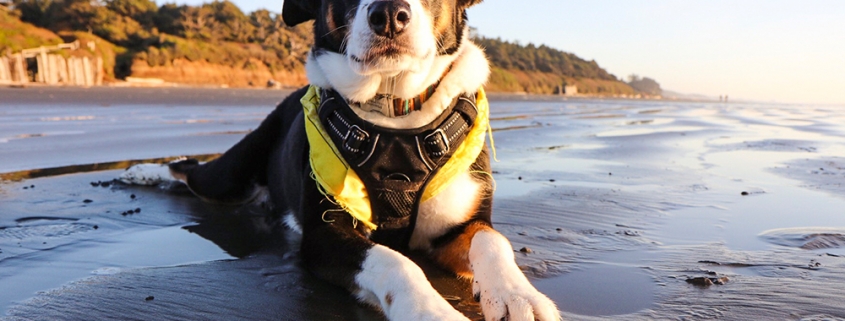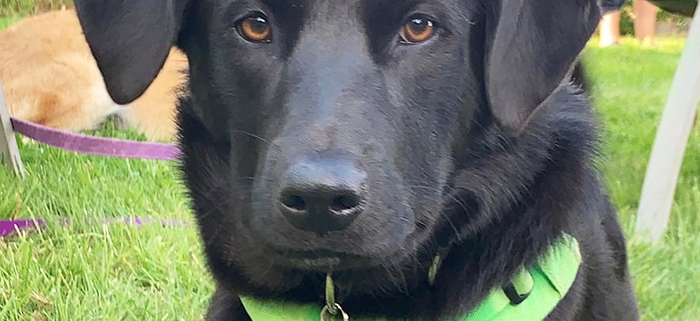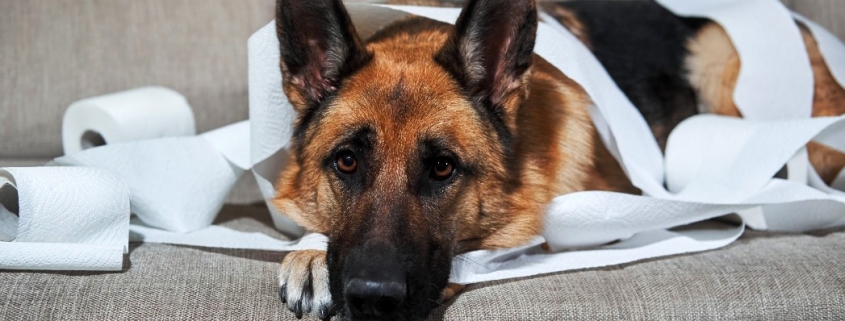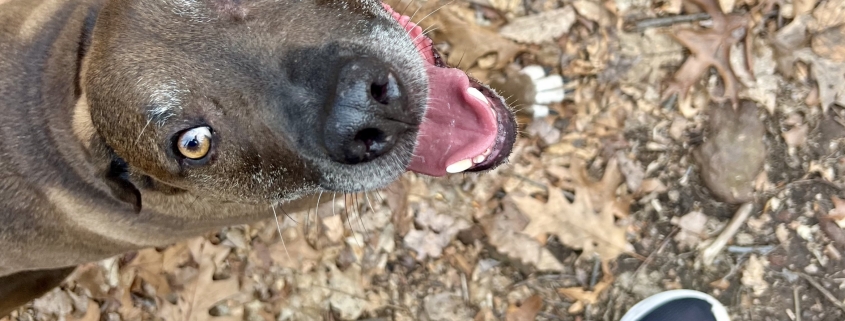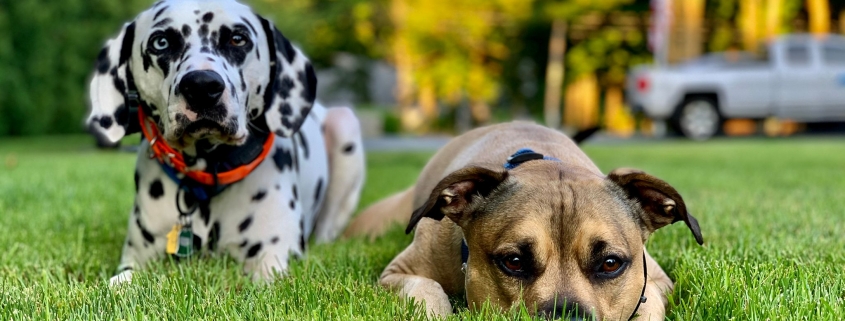Signs Your Dog has Heartworm and What to Do About It
/ Michelle YaglowskiBy now we’ve all been made aware of the risks related to heartworm. Recently, we realized that some information on heartworm was biased or incomplete. So, we decided to take a deeper dive into exactly what heartworm is, after one of our own dogs was diagnosed and we were left with some unanswered questions ourselves. Luckily, we have a close network of incredible veterinarians here and throughout the U.S. that helped to create an individualized plan. We wanted to share some of what we learned through our experience as well as touch on why we see an increasing prevalence of heartworm in the Northeast US and what we can do about it.Heartworm is a mosquito-borne illness caused by Dirofilaria immitis. The Dirofilaria immitis or “heartworm” is a parasite which is described as foot-long worms. These worms reside in the heart, lungs and blood vessels, most commonly in our beloved dogs. But why do they choose to mature and replicate in our furry friends? Well, dogs are considered a “natural host,” which makes growing and living quite easy.1 A dog’s body is the perfect climate for the heartworm to live. Although heartworm is most common in dogs, it can also be found in cats—but it is quite rare. Contrary to popular belief, cats are not natural hosts for these worms, and the worms often don’t mature as they do in dogs.1 Cats could have heartworm, but only have 1-3 worms in their system. This definitely makes detection difficult.
Heartworm: How the infection happens
When a mosquito bites a heartworm-infected animal, the mosquito ingests larvae, or immature worms. After some maturation within the mosquito, the mosquito is able to deposit the larvae into the skin of another animal. The larvae then make their way into the subcutaneous tissue (or fatty/connective tissue layer) which is deeper within the skin. The subcutaneous tissue has a bunch of small blood vessels that lead to larger blood vessels. The larvae travel through the blood vessels and eventually make their way to the vessels within the lungs. Here, at about 6 months after the mosquito bite, they are able to reproduce microscopic larvae, called “microfilaria.” 1 The microfilaria, since so small, are able to travel through the heart and through the blood stream. The microfilariae are always present in the blood once adult worms are mature enough to reproduce. They will continue to be present as long as the worms are still reproducing.5 The immature worms that reside in the smaller blood vessels cause inflammation and thickening of the blood vessel walls. As these worms grow, they are unable to fit through the smaller vessels and are forced into the larger vessels, which are the main arteries in the dog’s lungs. This is where complications can arise, and where dogs can start showing symptoms.
Signs: What do I look for?
Symptoms and signs of heartworm in dogs can vary in severity. In the early stages of heartworm infection, dogs may show minimal to no symptoms at all. As the infection progresses, the symptoms typically become more severe and non-specific. Dogs with preexisting health conditions or dogs who are heavily infected with worms are more likely to show symptoms. Most commonly, dogs will develop a cough, reluctancy to exercise, loss of appetite, and increasing fatigue. As the disease continues to advance, dogs can develop fluid overload secondary to heart failure.5
How is heartworm infection diagnosed?
Due to microfilaria taking approximately 6 months to manifest, heartworm testing is typically done at an annual exam by your vet. Unfortunately, this means that usually our rescues aren’t tested if they are under 1 year, and even if they are, they may not test positive until at least 6-8 months of age. This is unfortunate because dogs are often rescued from southern U.S.—where mosquitos and heartworm are more prevalent. Rescue dogs are occasionally given heartworm preventative medication, but this doesn’t mean they are guaranteed heartworm free.3 That said, it is our responsibility, as dog parents, to ensure our pets are tested appropriately.
Heartworm testing is done by blood sampling. The first test performed is typically testing for antigens. Antigens are proteins that are released into the dog’s bloodstream by female heartworms. These commercial tests are very specific, but the accuracy of this test is based on how many female worms are present within the dog’s body. The rapid, in-clinic antigen testing that is performed can detect “46%-76.2% of patients infected with a single female worm, and 84%-100% of patients with 3 or more female worms.”2 This means that the more worms present, the more accurate the antigen test is. However, it is recommended that both antigen and microfilariae testing are performed to confirm the diagnosis. The microfilariae can also be detected via blood sampling.
But why exercise restriction?
Personally, when I first heard the term ‘exercise restriction’ I was crushed. Immediately, I began to think about our usual long hikes and lengthy play dates were going to be a thing of the past. More importantly, I began thinking about how we were possibly going to burn all that pent-up energy. As I explored treatment options, I learned this doesn’t have to be the case. Instead, we chose a treatment option that allows for monitored exercise—so maybe we’ll just skip the weighted pack on our walks.
There are multiple treatment options available for heartworm infection, and it is important to weigh these options with your vet. The protocol is decided based on the severity of the disease, whether the dog has a pre-existing condition, and cost for pet parents. Heartworm treatment can be expensive and both mentally and physically taxing on you and your dog. It is recommended by the American Heartworm Society (AHS) to begin restricting exercise once the diagnosis is confirmed, regardless of which protocol is followed. However, not all veterinarians may recommend exercise restriction—this is based on the treatment option, your pet’s individual situation and health status. It is important to consult with your vet about what they think is best.
When exercise restriction is recommended, it is because it may increase the rate at which the heartworms damage the heart and lung tissue. The AHS makes a blanket strict exercise restriction recommendation that means no short walks, full crate rest during treatment, and leashed potty breaks. That said, AHS also states, “the more severe the symptoms, the less activity your dog should have.”1 In other words, a heartworm diagnosis doesn’t necessarily mean your dog must live in a crate for the duration of treatment.
Heartworm Treatment: The traditional ways
Upon a heartworm diagnosis, it is important to confirm your dog is in tip-top shape before beginning treatment. Usually, initial bloodwork will be performed which includes assessing the dog’s immune system, electrolytes, and liver function. Basically, baseline lab values are checked to ensure the dog can handle whatever treatment prescribed.
There are two types of traditional treatments—a series of injections or the use of a topical medication. The injection, although costly, is highly recommended as it has a 95% success rate, according to the American Heartworm Society. The medication, called Melarsomine, “is an arsenic-containing drug that is FDA-approved to kill adult heartworms in dogs.”4 This medication is injected into the deep tissue of a dog’s gluteal muscles, near their tail, on either side of their spine. The injection is often painful and can require pain medication and occasionally an overnight stay at the vet. The course is typically an injection, followed by 30 days of rest, another injection, then 24 hours later, the last injection. After the last injection, there is 4-8 weeks of continued exercise restriction, prior to being retested to see if the pup is still heartworm positive. Alongside the injections, an antibiotic (doxycycline) and a steroid (prednisone) are administered. Sounds exhausting on the body, right?
The other treatment option is known as “the slow kill” method. This is frequently the treatment of choice for shelters due to its price point. This option is less expensive than the injections—as the injections require frequent visits to the vet for check-ups. The slow-kill method uses a heartworm preventative medication over many months. This method also involves the use of doxycycline. This option is not highly recommended as it does not kill all life stages, it only prevents maturation of microfilariae.
Therefore, the most recommended traditional route, according to AHS, is the use of Melarsomine, in conjunction with an antibiotic and steroid, as prescribed by your vet. However, a potentially fatal complication of the use of the injections is the chance for blood vessel blockages. Said differently, as the treatment progresses the worms die and break up, they can block some of the various blood vessels and cause pulmonary emboli (blood clots in the lung). This is the reason AHS recommends strict exercise restriction and crate rest with this option.
Are ‘natural’ treatments an option?
My first thought as a pet parent— “Do I REALLY need to give our dog all these medications?” This was bothersome to me because, to us, Susie isn’t sick. She has plenty of energy, no coughing, and has a beautiful black coat. We wanted to find a way to kill the heartworms without compromising Susie’s loving (and sometimes annoying) personality. We didn’t want her to be in pain.
Like humans, a healthy diet generally supports a strong immune system and it’s important to consider this when choosing a traditional verses holistic treatment. As far as ‘natural’ treatments go, many have caught a bad name – and rightfully so. There are multiple blogs and opinions stating that one supplement is the magic bullet, but there is no science to support it. Obviously, there is no magic bullet – but there are alternative options to explore. Some include a combination of traditional and alternative treatments, and some may only include alternative options. In discussing the options with our veterinarians, we know that there is not a specific medication or protocol that all alternative practice veterinarians follow. That said, most have their preferences based on personal experience and most assert they can be successful with compliance, patience and supporting the immune system. Some examples include black walnut—said to expel and weaken worms, alongside the heart, circulatory, and immune supplementation.5
When our dog was diagnosed, we reached out to a vet who had plenty of experience treating dogs with heartworm. She had suggested a specific protocol for us to follow, which includes both traditional medications as well as supplementation that supports the immune system and heart. Our protocol also involves frequent check-ups—mostly to listen to heart and lung sounds to ensure the heartworms are not advancing.
Our best advice? Ask questions.
Questions like:
- What are all the options?
- What experience do you have with each of these options?
- Are there side effects I should be aware of?
- What health conditions does my pet have that can complicate treatment or outcome?
- How can I keep my pet comfortable?
- How and can we implement exercise?
- Are there ways I can help support my pet’s immune system?
These are just a few, but it is important to consider these, alongside the treatment options, with your family and your vet. Certain treatments may be beneficial for some dogs, but not other dogs. This depends on a workup that is performed—usually including bloodwork, x-rays, and other heart imaging. Regardless, just like with human health, obtaining a second opinion on treatment, and alternative options is never a bad idea! Believe it or not, most vets are happy to refer out for a second opinion – or offer one!
The MOST important question: WHY?
Always ask why. Whether it be human medicine or animal medicine, it is important to know what (e.g. supplement, medication) you are giving and WHY. No one should take supplements, medicines, or any treatment without asking what they are for. It is also important to understand the side effects associated with the medications or supplements. If you take nothing else from this let it be the lesson: Never be afraid to ask questions.
Susie has started her treatment and is doing just fine! ?
[vc_single_image image=”4994″]*This article is for informational purposes only. It is not meant to provide medical advice or replace the advice of a qualified veterinarian. If you think your pet has heartworm or any medical condition please seek the advice of a qualified veterinarian.
About the Author:
Michelle Yaglowski
Michelle is a Registered Nurse, holding her bachelor’s degree in Nursing with both Emergency and ICU experience. It goes without saying that she has incredible attention to detail, the ability to see past the obvious and a knack for research. Like many in this industry, she had a sick pet which developed her keen interest in animal nutrition, and her experience in human medicine and the ability to think critically serve her well in this space. Her quest for knowledge drives her to dive into topics that may be considered controversial, or that don’t have much research in animal nutrition. This allows her to provide a unique perspective to other pet owners which also encourages them to ask the tough questions and challenge the status quo. When she is not working in the hospital or researching and contributing to the NPP Journal she can be found spending time with her Dog Susie and cats Stout and Archer. If you have a topic or a question you would like an evidence-based research answer to you can email Michelle here.
References:
- org. 2020. Heartworm Basics – American Heartworm Society. [online] Available at: <https://www.heartwormsociety.org/pet-owner-resources/heartworm-basics> [Accessed 12 October 2020].
- Little S, Saleh M, Wohltjen M, Nagamori Y. Prime detection of Dirofilaria immitis: understanding the influence of blocked antigen on heartworm test performance. Parasites & Vectors. 2018;11(1):186. doi:1186/s13071-018-2736-5
- Managing Heartworm Disease in Shelter Animals | Today’s Veterinary Practice. Accessed October 13, 2020. https://todaysveterinarypractice.com/ahs-heartworm-hotline-managing-heartworm-disease-in-shelter-animals/
- Medicine C for V. Keep the Worms Out of Your Pet’s Heart! The Facts about Heartworm Disease. FDA. Published online July 29, 2020. Accessed October 13, 2020. https://www.fda.gov/animal-veterinary/animal-health-literacy/keep-worms-out-your-pets-heart-facts-about-heartworm-disease
- Treating Heartworm Holistically – Whole Dog Journal. Accessed October 13, 2020. https://www.whole-dog-journal.com/care/treating-heartworm-holistically/
Essential Tips for Emergency Preparedness and Pet Food
/ Nicole R. CammackIn Connecticut, we experienced the impact of a tropical storm in 2020 that left many without power for days. This highlights the importance of emergency preparedness, particularly when it comes to pet food and supplies. In this guide, we’ll provide valuable advice and practical solutions to ensure you’re well-equipped for any future power outages. Discover the best practices recommended by our team.
Best Practices for Emergency Preparedness
Ensure Access to Clean Water: Having clean and safe water readily available for both you and your pets is crucial during emergencies. Dehydration and heat-related concerns can pose serious risks, especially in the summertime. Remember to rotate your emergency water supply every 6-12 months to maintain freshness.
Create a First Aid Kit: Prepare a comprehensive first aid kit that includes essential items such as emergency bandages, medicines, and antibiotic ointment. Additionally, include specific items for your pets like nail clippers, extra gauze, veterinary wrap tape, and styptic powder. Ensure you regularly check and replace supplies every 6 months to avoid expired products.
Medications & Calming Aids: Consider including calming aids, such as CBD products, in your emergency kit, along with any necessary prescription medications for you and your pets. Explore options like those offered by Super Snouts to provide extra comfort during stressful situations.
Leash, Collar & ID Tag: Always keep spare leashes, collars, and ID tags handy. You never know when you might need an extra one, especially during emergencies.
Poop Bags: Pack an ample supply of poop bags to ensure easy and sanitary clean-up and disposal, even during challenging circumstances.
Pest Control: Include pet-friendly pest control solutions like Wondercide to keep pests at bay, safeguarding both you and your pets during emergencies.
Blankets and Towels: Don’t forget to include blankets and towels in your emergency preparedness kit. These versatile items are essential for both you and your pets in various situations.
Emergency Food Options: While it’s advisable to include a small bag of your pet’s kibble in your emergency kit, it may not always be feasible, especially for raw or fresh food feeders. Explore alternative options such as:
- Canned & Wet Foods:
- Freeze Dried Foods: Freeze-dried foods offer a seamless transition regardless of whether you feed kibble, raw, or anything in between. They are lightweight, require minimal space, and offer nutrient-dense options.
- Pros: Lightweight, space-efficient, nutrient-dense, sturdy packaging, easy to switch, suitable for picky eaters and sensitivities. Read more here!
- Cons: Potentially higher cost in some cases. Recommended Brands: Northwest Naturals, SmallBatch, (or Feline Natural for the kitties!)
- For raw feeders, freeze-dried food is an ideal choice for emergency preparedness. It is a realistic, cost-effective, and nutrient-dense option that can be used as treats, emergency meals, or when you forget to thaw or purchase food from the store. The chances of digestive upset are minimal, even when transitioning abruptly from kibble or raw diets.
- By incorporating freeze-dried food into your pet’s regular diet or using it as treats, you can provide affordable and enjoyable options for your pets. During the recent power outage, we successfully relied on these products in our weekly rotations.
Conclusion
Preparing for emergencies requires careful planning, especially when it comes to pet food and supplies. By following these essential tips, you’ll be well-prepared for any emergency that you may be faced with.
Looking for more? Check out our boredom-buster ideas here: Keeping Your Pets Entertained
Engage Your Pooch: Fun Ways to Keep Your Dog Mentally and Physically Active
/ Nicole R. CammackMore people are home with their pets these days and just like their humans, pets need to stay both mentally and physically engaged. Rather than have your dog decide how to entertain himself (i.e. eating your favorite shoes or chewing on your couch cushions) here are a few ideas to try out with your pooch.
Teach your dog to “Find It!”
Teaching your dog the basics of scent work is both mentally and physically engaging for your pet by making him feel useful and productive. All you need are some treats and/or toys. Have your dog “stay” in a certain spot. Place a bit of food or his favorite toy at the other end of the room. Give your dog a command to “find it”. After doing this a few times your dog will understand what you want him to do.
Once your dog seems to know “find it” try increasing the nose challenge. While your dog is in the stay position put the treat or toy out of his line of sight. The idea is to increase the distance between your pet and the treat/toy.
Using a treat that is “smelly” and putting it out of his line of sight is a great way to teach your dog to use his sense of smell and not sight. Be sure to shower your dog with praise when he finds the treat. While teaching this skill, you may want to begin by dragging the treat along the floor to create a scent path until he gets more adept at using his nose. Place treats in various locations around your home, some easier to find and others more of a challenge.
Another simple nose work game is “which hand”. Hide a treat in one of your hands while your dog watches and ask your dog “which one”? If he chooses the wrong hand don’t give him the treat. When he chooses the correct hand, reward him with the treat and lots of praise. He will learn to use his nose rather than eyes to find the treat.
Interaction & Play
In addition, to “hide and seek” with treats and toys, there are a number of other games you can play with Rover. Here are a few:
Tug of War: Always fun for dogs, a good teaching tool and great exercise.
Fetch: Of course, only if you have the space to do this safely!
Puzzle games: There are many different “treat” puzzles on the market to challenge your pet. We have several options like snuffle mats, Paw5 bowls, Mine Pet Platters, Kong Toys, Licki Mats & more!
Chasing bubbles: All you need is just a bottle and a wand. Bubble stuff is generally non-toxic and this can be great exercise.
How to choose the right toy
Toys provide a great outlet for your pup’s mental and physical energy. A popular one is a stuffed Kong. You can stuff the toy with a variety of treats that will keep your pet busy and entertained. Another great option is our new Licki Mats – these are textured silicone mats that you can put yogurt, peanut butter, canned food, etc. and freeze it! This provides a long-lasting treat that results in a tired pup! Again, dogs love a challenge and these are great ones that tend to hold up to dogs who may need tougher options. Luckily, they make various sizes for all size dogs!
Why chewing matters
Chewing is a great form of mental stimulation because it allows them to focus on one thing to engage various muscles that surround their jaw resulting in one tired pup! Great all-natural, non-toxic options include Earth Animal No-Hides, Stash bully sticks, raw bones, duck necks, turkey necks, antlers, water buffalo horns, and more!
Note: We do have great “Boredom Bag” options – our staff will ask you a variety of questions to determine your dog’s likes, dislikes, sensitivities, activity level, and chewing habits to create a customized bag of treats, toys and extra surprises for your cat or dog!
Master the basics…and more
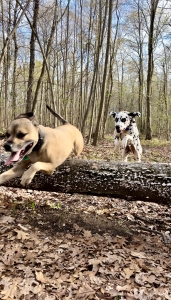
OK – so we’re all a little guilty (maybe) for letting our dogs off easy. Brush up on basic obedience, or take the opportunity to teach your dog basic obedience commands: sit, down, stay, drop it, and come here.
Take it a step further and teach your dog basic impulse control commands: wait, stay, settle, down, and “place”. Start by teaching your dog to look at you. Always reward patient behavior.
Teach your dog a new “skill” like putting their toys away, naming their toys, and finding their toys. Start with one specific toy that you give a name. With some practice and praise your dog will learn his specific toys by name.
When teaching your dog a new trick, you may consider clicker training as an option. This uses conditioning to teach your dog that when he hears the clicker he will get a treat for doing the task he was asked.
Grooming
Sure, not all dogs are fans of being groomed but it does need to be done now and then. Brushing, bathing, nail trimming … reward good behavior with treats and praise. It’s important to remember to be patient, dogs can pick up on our anxiety and stress – stay calm!
Calm time
It doesn’t always have to be about physical and mental challenges. Some snuggling together on the couch, a “doggie massage”, or even reading to your dog can be a wonderful way to spend some quality time with your dog.
If your dog is normally crated when you are at work, it is probably best to continue to utilize crate time for short periods of time during our quarantine times. This may help to reduce separation anxiety when we do begin to return to work.
From teaching your dog tricks, basic scent training, playing games, and providing chew treats/toys there are many great options to keep your pet mentally and physically challenged.
Publications: Cammack, N.R., Yamka, R.M., and Adams, V.J. (2021). Low Number of Owner-Reported Suspected Transmission of Foodborne Pathogens From Raw Meat-Based Diets Fed to Dogs and/or Cats. Frontiers in Veterinary Science 8. doi: 10.3389/fvets.2021.741575.
https://www.frontiersin.org/articles/10.3389/fvets.2021.741575/full
Contact:
https://www.linkedin.com/in/nicole-cammack-8400084b/?trk=author_mini-profile_title
Ten Things You Need to Know About EEE Virus & Your Pets
/ Nicole R. CammackHere’s what you need to know about mosquitos in order to protect your pets from Triple E and more.
Why Dogs and Cats Eat Grass: Understanding Your Pet’s Natural Behavior and Health Needs
/ Nicole R. CammackMany people believe that pets eating grass are a sign of an upset stomach, but this is usually not the case. In fact, it’s perfectly natural and healthy for dogs and cats to eat grass.
Tick-Borne Diseases: Types, Symptoms, and Prevention
/ Nicole R. CammackTicks can transmit a number of harmful diseases to both pets and humans. It’s crucial for pet owners to be aware of the signs and symptoms of tick-borne diseases.

Tuesday
Wednesday
Thursday
Friday
Saturday
Sunday
10am – 7pm
10am – 6pm
10am – 7pm
9am – 6pm
9am – 5pm
10am – 4pm
DIY Dog Wash closes one hour prior to store close.
Newsletter Sign-Up
Subscribe to get weekly tips, seasonal advice, and be the first to know about events, new products, sales, and more.
NorthPoint Pets is consistently recognized for excellence


